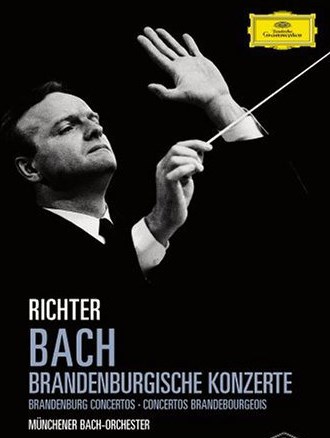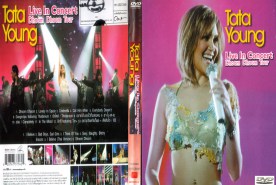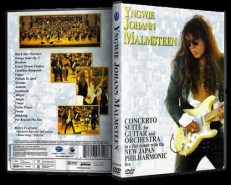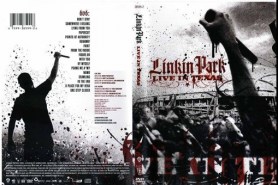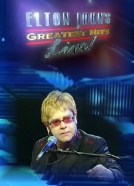
Richter Bach Brandenburgische Konzerte

แผ่นไรท์+ข้อมูล แผ่นสกรีน พร้อมปกสี หน้า-หลัง ไม่มีกล่อง (เพิ่มกล่องเปล่าใบละ10บาท)
CLONE Original from Master 100%
ไม่ขายแผ่นไรท์เปล่า ๆ ขาว ๆ นวล ๆ ติดสติกเกอร์ หรือใช้ปากกาสี เขียนบนแผ่น
อีกหนึ่งทางเลือก > อยากได้เพลงของใคร แผ่นไหน ชุดไหนทั้งไทยและเทศ สากล เก่าใหม่ แผ่นแท้หาซื้อที่ไหนไม่ได้แล้ว มือสองก็ราคาไปไกลเกินปก ค้นหาสินค้าในร้านไม่เห็น
สอบถามเพิ่มเติม ฝากข้อความได้ (ไม่สะดวกรับ order ทางโทรศัพท์)
097-457-6471 id Line sabaycd
088-555-2703 id Line sabuycd
ใช้เน็ท ค่ายทรู/ดีแทค แล้วเข้า sabaycd.com ไม่ได้ให้ไปเข้าที่ www.sabuycd.com แทนนะคะ

The Brandenburg Concertos, dedicated by Bach to the Margrave Christian Ludwig of Brandenburg on 24 March 1721, are so great that they can withstand dozens of performance philosophies without succumbing to overfamiliarity or banality. There simply is no “last word” in performances regardless of the number of times they have been recorded over the years. Conductors as wildly different as Trevor Pinnock and Leopold Stokowski have offered wildly divergent recordings and each, in their own inimical fashion, have illuminated some musical truth contained within Bach’s magnificent scores. Even Herbert von Karajan, hardly a name that springs to mind when considering conductors sympathetic to the Baroque era, recorded a serviceable rendition of the Brandenbergs without the Romantic era overlay he was prone to in his early music recordings (his Handel still makes me shudder). When the “Early Music Movement” gathered steam in the 1960’s many of these Romantic era accretions were sand-blasted away until now, when confronted with long-ago recordings of Baroque music, they often sound bloated and elephantine with too many instruments and turgid tempos. Today, Bach on modern instruments is usually considered politically incorrect. A conductor is certainly playing with fire. Some can make it work but few try it these days. Karl Richter made Bach his specialty during the birth era of “authentic performance practice” but shunned period instruments. Thus, paradoxically, his Bach is a true hybrid of the older (modern) instrumental style with new (Baroque era) performance scholarship. This DVD is an important recording that preserves an era in Bach performance while also musically beautiful. Richter’s Brandenburgs are lovely and insightful recordings that supplant no one but carve out a niche for themselves as enjoyable, musical Bach that entertains.
Richter conducts the Munchener Bach-Orchester. Featured as soloists are future conductor Hans-Martin Linde on recorder in the 2nd and 4th Concertos, Otto Buchner on violin in the 2nd, 4th and 5th, Pierre Thibaud excellently negotiating the difficult high trumpet part in the 2nd Brandenburg, Manfred Clement on oboe in the 2nd and various other musicians featured throughout the Brandenburgs, all of them superb. The orchestral forces are appropriate, tempos are fleet, vibrato is judicious, articulation is unsentimental, string sonorities are brilliant and intense; all conforming to authentic performance practice. These recordings were made at the elegant Schloss Schleissheim, Munich on Aril 1-10, 1970. There is little in the performance style that dates them. If you grew up listening to Trevor Pinnock & the English Concert or Reinhard Goebel & Musica-Antiqua Koln, as I did, you will still find Richter’s performances pretty familiar. They won’t make you forget the various period instrument orchestras but you will appreciate Richter’s Bach on its own terms. I really enjoyed this DVD and found these performances enlightening. The 1st Brandenburg is quite lyrical, the 2nd with it’s brilliant trumpet part is exciting, both the enigmatic 3rd and the 6th are string dominated and are given jaunty performances. The lovely flute-driven 4th has a sweet arioso quality, while the 5th Brandenburg, a prototypical keyboard concerto, is played with energetic flair. I found myself replaying concertos as the mood struck me instead of filing the DVD away, surely a good sign.
The Brandenburgs were filmed in Munich April 1-10 1970 with a picture format of NTSC color shot full-screen with a 4:3 ratio and a region code of 0 (worldwide). The picture appears digitally remastered and is sharp. Sound formats available are PCM stereo and DTS 5.1 Digital Surround Sound. The sound is crys
 |
 
|

